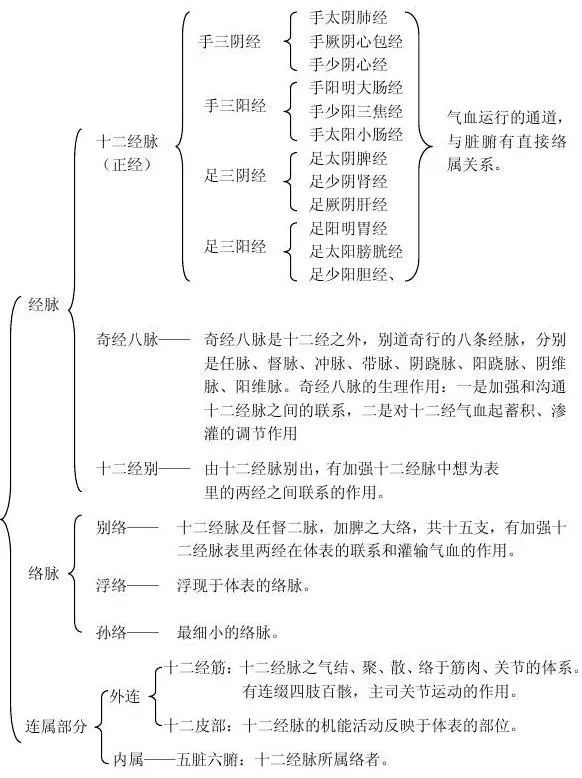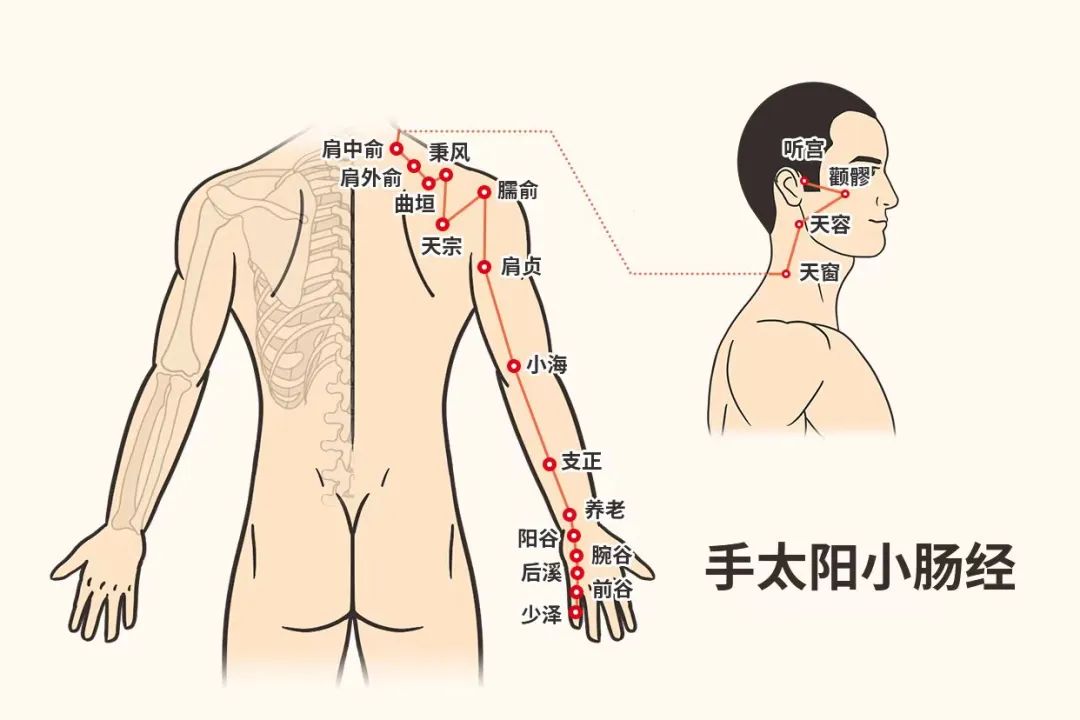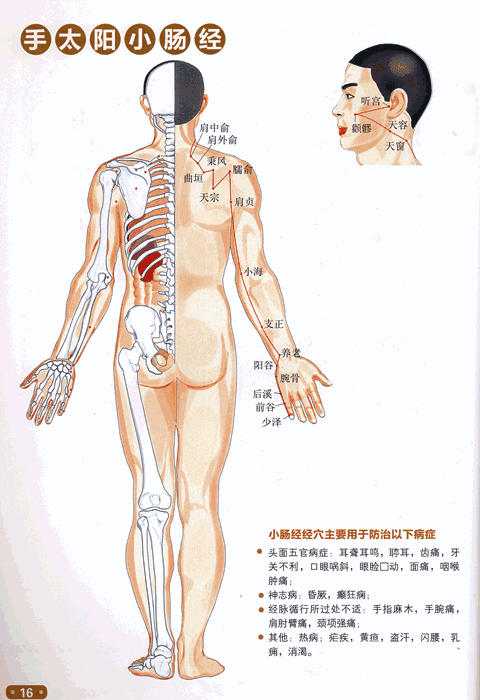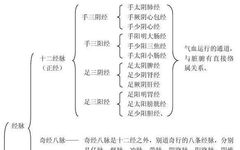
1. The Theory of Meridians explains the concept of meridians in the human body, the composition of the meridian system, its distribution, physiological functions, pathological changes, and its relationship with the organs, body structures, and Qi dynamics. This theory is a crucial component of the TCM theoretical system.
2. Meridians refer to the general term for Jingmai (经脉) and Luomai (络脉), which are the pathways for the circulation of Qi and blood, linking the organs, communicating internally and externally, and connecting the upper and lower parts of the body. The Jingmai are the main pathways, while the Luomai are the branches of the Jingmai.
3. The Meridian System consists of Jingmai and Luomai. The Jingmai includes the Twelve Regular Meridians (十二经脉), Eight Extraordinary Meridians (奇经八脉), and the associated branches such as the Twelve Divergent Meridians (十二经别), Twelve Muscle Meridians (十二经筋), and Twelve Skin Areas (十二皮部); the Luomai includes Fifteen Collaterals (十五脉络) and superficial collaterals (浮络), among others. The diagram below illustrates the composition of the meridian system:
4. We will study the Hand Taiyang Small Intestine Meridian (手太阳小肠经). Before we begin, let’s review a few key points. The names of the Twelve Meridians are composed of three parts: hand or foot, yin or yang, and organs. Upper refers to hand, lower refers to foot: hand meridians run in the upper limbs, while foot meridians run in the lower limbs. Meridians that start or run in the hands are called “hand meridians”; those that start or end in the feet are called “foot meridians.” Inner refers to yin, outer refers to yang: meridians that run along the inner sides of the limbs are called “yin meridians”; those that run along the outer sides are called “yang meridians.” According to the yin-yang division, yin is divided into three yin: Taiyin (太阴), Shaoyin (少阴), and Jueyin (厥阴); yang is divided into three yang: Yangming (阳明), Taiyang (太阳), and Shaoyang (少阳). Each hand and foot has three yin meridians: Taiyin, Shaoyin, and Jueyin; and three yang meridians: Yangming, Taiyang, and Shaoyang. Organs belong to yin, while bowels belong to yang: each of the Twelve Meridians has a specific relationship with the six yin organs and six yang organs. The six yin meridians belong to the organs and are named after the corresponding organ, such as the Lung Meridian (肺经); the six yang meridians belong to the bowels and are named after the corresponding bowel, such as the Stomach Meridian (胃经).
5. The Direction of the Twelve Meridians follows certain rules: “The three yin of the hand run from the chest to the hand; the three yang of the hand run from the hand to the head; the three yang of the foot run from the head to the foot; the three yin of the foot run from the foot to the chest and abdomen.” The three yin meridians of the hand start from the chest, running along the inner side of the upper limb to the fingertips; the three yang meridians of the hand start from the fingertips, running along the outer side of the upper limb to the head and face; the three yang meridians of the foot start from the head and face, descending along the trunk and outer side of the lower limb to the toes; the three yin meridians of the foot start from the toes, running along the inner side of the lower limb to the abdomen and chest.
6. The Sequence of Flow of the Twelve Meridians is illustrated in the diagram below:

7. Now we will begin learning about the Hand Taiyang Small Intestine Meridian.

Hand Taiyang Small Intestine Meridian starts at the Shaoze (少泽) point on the ulnar side of the little finger, runs along the ulnar side of the palm upwards, exits at the ulnar styloid process, and continues along the posterior ulnar side of the forearm upwards, exiting between the ulnar olecranon and the medial epicondyle of the humerus, then runs along the inner side of the upper arm to the shoulder joint, encircling the scapula, meeting the Du Mai (督脉) at the Dazhui (大椎) point, then entering the supraclavicular fossa, penetrating the body cavity, connecting with the heart embryo, descending along the esophagus, passing through the diaphragm, reaching the stomach, and entering the small intestine. Its branch runs from the supraclavicular fossa along the neck to the outer corner of the eye, then returns to enter the ear. 8. About the Hand Taiyang Small Intestine Meridian:① The Small Intestine Meridian starts at the Shaoze (少泽) point of the little finger and ends at the Tinggong (听宫) point in front of the ear, with a total of 19 acupoints.② The flow time of the Small Intestine Meridian is from 1 PM to 3 PM, and the small intestine is the organ associated with the kidneys.③ The small intestine is responsible for separating the clear from the turbid; the stomach digests food and transmits it to the small intestine, which then transports nutrients to the spleen and sends waste to the large intestine, while fluids are directed to the bladder.④ Dysfunction of the small intestine can lead to poor absorption, imbalance of yin and yang, especially in those who are emaciated.⑤ The small intestine governs fluids; as stated in the Huangdi Neijing (黄帝内经), it is the master of fluids, and those who are ill may experience deafness and jaundice.⑥ Additionally, the Small Intestine Meridian is closely related to the secretion of breast milk in postpartum women.⑦ The most prone area for blockage in the Small Intestine Meridian is the neck and shoulder region; if there is stagnation here, it can lead to soreness and pain in the neck, shoulders, and lower back.⑧ The heart and small intestine are interrelated; if heart fire is excessive and descends to the small intestine, it can scorch the fluids, leading to dry mouth, bitter taste, and painful urination.⑨ All of these issues can be improved by unblocking the Small Intestine Meridian.
8. About the Hand Taiyang Small Intestine Meridian:① The Small Intestine Meridian starts at the Shaoze (少泽) point of the little finger and ends at the Tinggong (听宫) point in front of the ear, with a total of 19 acupoints.② The flow time of the Small Intestine Meridian is from 1 PM to 3 PM, and the small intestine is the organ associated with the kidneys.③ The small intestine is responsible for separating the clear from the turbid; the stomach digests food and transmits it to the small intestine, which then transports nutrients to the spleen and sends waste to the large intestine, while fluids are directed to the bladder.④ Dysfunction of the small intestine can lead to poor absorption, imbalance of yin and yang, especially in those who are emaciated.⑤ The small intestine governs fluids; as stated in the Huangdi Neijing (黄帝内经), it is the master of fluids, and those who are ill may experience deafness and jaundice.⑥ Additionally, the Small Intestine Meridian is closely related to the secretion of breast milk in postpartum women.⑦ The most prone area for blockage in the Small Intestine Meridian is the neck and shoulder region; if there is stagnation here, it can lead to soreness and pain in the neck, shoulders, and lower back.⑧ The heart and small intestine are interrelated; if heart fire is excessive and descends to the small intestine, it can scorch the fluids, leading to dry mouth, bitter taste, and painful urination.⑨ All of these issues can be improved by unblocking the Small Intestine Meridian.
Traditional Chinese Medicine

If you have any questions or health issues, you can click on the “Read the Original Article” link below, and an online doctor will provide one-on-one answers for you..
END
Disclaimer: Images are sourced from the internet; if there is any infringement, please contact for removal.


